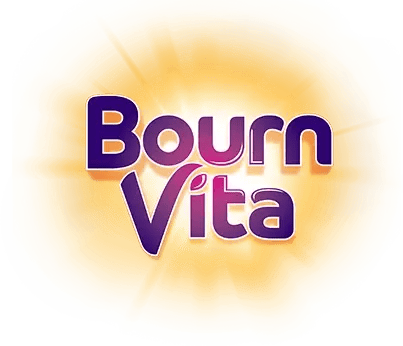- Infants and Toddlers (0–3 Years)
- Young Children (4–9 Years)
- Pre-Teens (10–12 Years)
- Teenagers (13–19 Years)
- Young Adults (20–35 Years)
- Middle Age (36–55 Years)
- Seniors (56+ Years)
Introduction

Healthy eating looks different at every stage of life, yet the foundation remains the same: balanced meals that fuel the body with the right mix of nutrients. For families, this becomes even more important since each member, from children to grandparents, has unique needs. A growing child may need extra protein and calcium, a teenager may require more iron and energy-rich foods, while adults often benefit from fiber-rich grains and heart-friendly fats. Understanding how to adjust portions and food types according to age helps the entire family thrive together.
A balanced diet food list for families is about making thoughtful choices with what is easily available at home, whole grains, dals, vegetables, fruits, nuts, and dairy or their alternatives. Small swaps, like replacing refined flour with whole wheat or adding seasonal vegetables to regular dishes, can make everyday meals more nourishing.
The real strength of such a list lies in its adaptability. It helps parents ensure that young children get the nutrition they need for growth, teens stay energized for their busy routines, and older members enjoy meals that support bone strength, digestion, and overall well-being. With the right mix on the plate, every age group in the family can enjoy food that is not only tasty but also tailored to their health.
7 Age-Wise Essentials for a Balanced Diet

The needs of the body keep changing with age. While children require nutrient-rich meals that support rapid growth, teenagers need foods that match their energy demands, adults focus on maintaining health and stamina, and seniors benefit from lighter, easy-to-digest meals that strengthen bones and immunity. A family food list designed according to age groups ensures that everyone gets the right balance while still sharing similar meals at the table.
Infants and Toddlers (0–3 Years)
According to the study published in Nat Rev Neurosci. 2010, this stage requires nutrient-dense foods for rapid brain and body development. Along with mother’s milk in the first year, soft foods like mashed fruits, khichdi, dal water, and ragi porridge provide proteins, vitamins, and minerals. Small, frequent meals ensure steady energy and help build healthy eating habits early.
Young Children (4–9 Years)
According to the Dietary Guidelines for Indians, kids in this age group are highly active, so meals should focus on whole grains like wheat and rice, calcium-rich dairy, and colorful vegetables. Fruits like bananas and papayas give quick energy, while nuts in small amounts support brain function. Balanced meals improve immunity and help children stay energetic for play, school, and learning.
Pre-Teens (10–12 Years)
According to FSSAI, this stage demands protein-rich foods such as dals, paneer, eggs, or sprouts for muscle growth. Iron from green leafy vegetables and vitamin C from citrus fruits build strong blood and prevent fatigue. Snacks like fruit yogurt or roasted chana make healthier choices than fried foods, keeping energy steady throughout the day.
Teenagers (13–19 Years)
Study published in Acta Biomed. 2022, shows that teenage growth requires extra iron, calcium, and protein. Whole grains, milk, curd, and nuts provide long-lasting fuel, while leafy greens and fruits support skin and bone health. Hydrating drinks like coconut water or fresh juices are better alternatives to sodas. Balanced meals here not only fuel study and sports but also build lifelong healthy habits.
Young Adults (20–35 Years)
According to the Dietary Guidelines for Indians, busy routines demand meals rich in fiber, lean proteins, and healthy fats. Pulses, whole grains, seasonal vegetables, and fruits provide energy while preventing nutrient deficiencies. Nuts and seeds support mental focus, while limiting fried foods and excess sugar reduces the risk of lifestyle diseases. Consistent hydration keeps stamina high through long workdays.
Middle Age (36–55 Years)
This stage benefits from fiber-rich grains, legumes, and leafy greens to manage cholesterol and digestion. According to the National Institutes of Health, calcium and vitamin D sources like milk, curd, or ragi support bone strength, while omega-3 from nuts help heart health. Seasonal fruits and vegetables bring antioxidants that reduce stress and keep immunity strong. Small, frequent meals work best for busy schedules.
Seniors (56+ Years)
As per the study published in Nutrients in 2020, as metabolism slows, meals should be light yet nutrient-rich. Soft-cooked dals, khichdi, and vegetable soups provide protein and energy without straining digestion. Calcium and vitamin D remain important for bone strength, while fruits like papaya, guava, and apples provide fiber and antioxidants. Staying hydrated with buttermilk or coconut water keeps energy steady and prevents fatigue.
Conclusion

Healthy eating doesn’t mean cooking different meals for each age group. By adjusting textures, portions, and the balance of nutrients, one family meal can nourish everyone, from toddlers to grandparents. Whole grains, proteins, vegetables, fruits, dairy or alternatives, and hydration form the backbone of this balanced list. With mindful planning, every member of the family enjoys meals that taste good while meeting their unique needs for growth, energy, and long-term health.
Her love for storytelling began with reading her grandfather’s speeches, where Tarishi saw the power of words in creating lasting memories. Combining her passions for food and writing, she has turned her life into a fulfilling path of sharing stories that celebrate flavours and how food brings communities together.
The views expressed are that of the expert alone.
The information provided in this content is for informational purposes only and should not be considered a substitute for professional medical advice, diagnosis, or treatment. Always seek the advice of your physician or another qualified healthcare provider before making any significant changes to your diet, exercise, or medication routines.
References
https://pmc.ncbi.nlm.nih.gov/articles/PMC7231187/
https://www.niams.nih.gov/health-topics/calcium-and-vitamin-d-important-bone-health
https://www.nin.res.in/dietaryguidelines/pdfjs/locale/DGI24thJune2024fin.pdf
https://www.fssai.gov.in/upload/knowledge_hub/19928164b641b8a487eHealthy%20food%20for%20Defence.pdf
https://www.nin.res.in/downloads/DietaryGuidelinesforNINwebsite.pdf
















